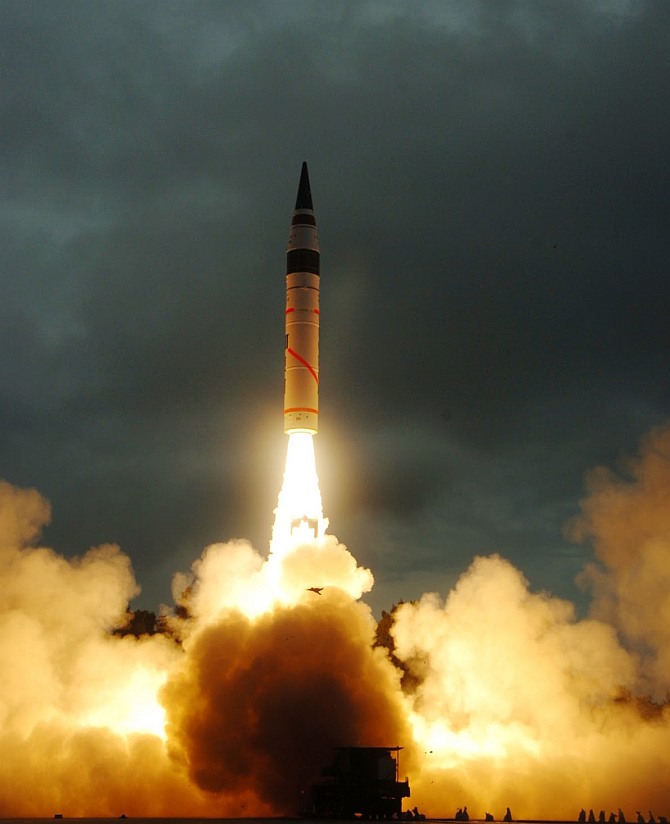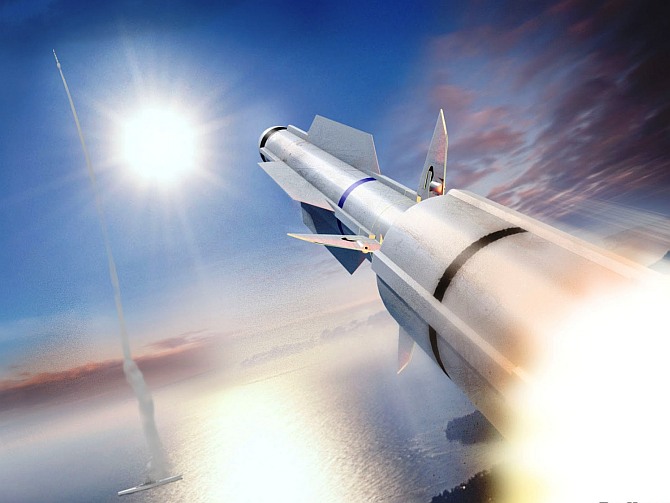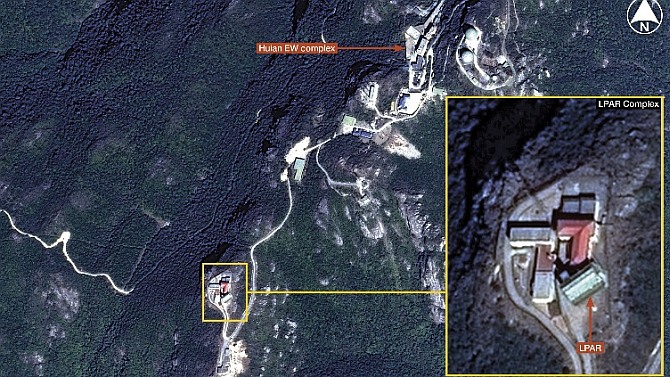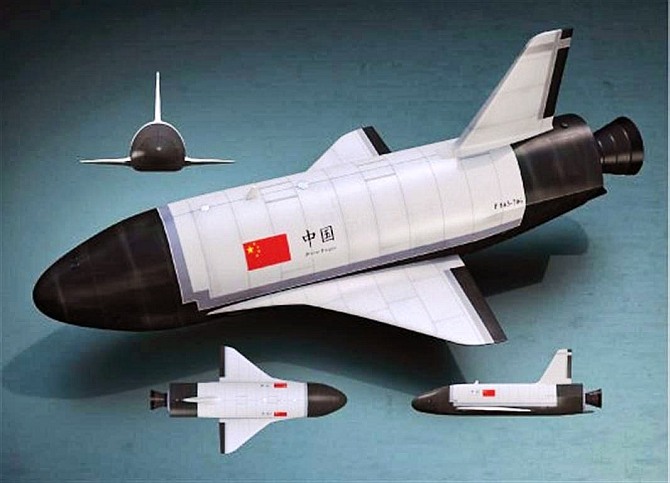DrSomnath999
SENIOR MEMBER

- Joined
- Sep 1, 2011
- Messages
- 2,428
- Reaction score
- 4
- Country
- Location

China has well and truly cemented its position in the 'star wars' era. Gordon Arthur explains why.
Sometime in the next few months, India will conduct the first canister-based trial of its blue-ribbon intercontinental ballistic missile, the Agni-V, at Wheeler Island.
Able to reach targets anywhere in China thanks to its 5,500 km range, this missile is hugely important to India's nuclear deterrence strategy.
"Agni-V is in final induction configuration... The missile will be ready for induction in the armed forces over the next couple of years after three to four more successful test firings from canisters," declared Avinash Chander, chief of the Defence Research and Development Organisation.
Canister-launched missiles are preferable because their survivability against enemy attack increases; road-based launchers can quickly change location. Furthermore, the addition of canister-launch ability gives the Agni-V a true quick-reaction capacity.
The Agni-V is a three-stage solid-propellant missile that has already achieved two successful test-firings. It builds upon existing family members, the Agni-I (with 700 km range), Agni-II (2,500 km), Agni-III (3,000 km) and Agni-IV (3,500 km).
The chief purpose of the Agni-V is obviously to target China. However, Beijing has been greatly improving its ability at targeting incoming ballistic missiles.

In a report entitled Space Invaders -- China's Space Warfare Capabilities', published recently by Jane's Intelligence Review, its authors explore the enormous investment Beijing is funnelling into space warfare.
China has long been developing an anti-ballistic missile system that will have dramatic implications for the deterrence threat posed by India's missile force. If China can effectively negate the threat posed by Agni missiles, it has less to fear from India.
Indeed, the report concluded: "A limited ABM force is capable of protecting the industrial and population centres in eastern China from attack by longer-range Indian systems that are currently under development... One regional impact may be that it [China] feels emboldened to greater assist its own allies or Indian adversaries, such as Pakistan, in times of regional tension."
ABM systems have the potential to critically alter strategic balances because they nullify an adversary's attack capability.
Currently only the USA and Russia have operational ABM networks, although China is fast closing in on one, and India is pursuing such a system.
China's efforts to create an ABM capability began as early as 1964 due to fears about American and Soviet missiles.
If China has the ability to destroy incoming Indian missiles, Delhi will be forced to produce greater numbers, more destructive warheads or more sophisticated countermeasures to achieve the same effect.
Thus, India will almost assuredly develop multiple independent re-entry vehicles (MIRV) for the Agni-V, which will give each missile 2-10 separate nuclear warheads.
The same is true of Russian and US ICBMs, where a limited strike with a small number of missiles will no longer be guaranteed success. Instead, a larger barrage will be required.
Another aspect of the People's Liberation Army programme, and complementary to its ABM project, is the ability to target 'enemy' assets in space.
Key among them are anti-satellite weapons such as the SC-19 missile produced by the China Aerospace Science and Industry Corporation. It carries a 35 kg kinetic kill vehicle that can be used for both ASAT and ABM purposes.

China controversially tested an SC-19 in 2007 when it destroyed a defunct weather satellite and created 150,000 pieces of space debris.
The SC-19 has since been used in two other confirmed tests, one in January 2010 and another in January 2013.
However, the SC-19 is not the only trick in China's bag.
The HQ-9 air-defence missile, copied from Russian technology, has been developed into an HQ-9B anti-tactical ballistic missile variant.
The US Department of Defence also claims China has developed the HQ-19, an equivalent of the Terminal High-Altitude Area Defence system, of which the US Army currently has a battery deployed on Guam.
The Jane's report gave a bold warning: "Chinese ABM development is on par with US efforts technologically, only lagging behind in deployment."
However, Chinese investment will rapidly turn this situation around, with the authors stating "China could meet or exceed US ABM deployment levels within the next decade".

Image: Airbus Defence and Space imagery shows an unusual large phased array radar (LPAR) deployed at the Huian Electronic Warfare (EW) complex in Fujian Province, China. The LPAR differs from other Chinese LPARs in that its array face is oriented much closer to vertical
Large phased-array radars are key to conducting space-based intercepts.
They can be used offensively or defensively, supporting either anti-satellite attacks or a ballistic-missile early-warning function.
China has four known LPAR sites at Huian, Korla, Longgangzhen and Shuangyashan that provide coverage of most of Russia, Central Asia, India and Taiwan/Southeast Asia.
It is suspected the Huian site near the Taiwan Strait may be an electronic attack device able to target the strategically important AN/FPS-115 Pave Paws long-range early-warning radar atop a mountain in Taiwan.
Indeed, the Jane's report estimated, "Despite the potential to negate US missile threats, few capabilities offer a substantial threat to US forces, and the largest impact will be felt regionally through the potential interference with Taiwanese ballistic-missile early-warning systems, or the increasing Chinese assertion over shipping lanes."
Not content with current progress, China is constantly fishing for new technologies.
For example, in June the US security technology group Crowd strike accused the clandestine hacker group Unit 61398, with close links to the PLA, of systematically attacking computer systems belonging to space/satellite partners of US and European governments to glean top-secret information.
Just a few weeks earlier, the US Department of Justice indicted five PLA members of Unit 61398 for cybercrimes.
China is also pursuing high-energy laser weapons that can dazzle, blind or destroy enemy systems such as imaging satellites.
This is an acute threat for a country like the USA that is so dependent on space-based sensors.
It was reported in September 2006 that China fired a laser at a US spy satellite. The DoD regularly reports that China continues to pursue laser weapons for ASAT and ABM roles.

Image: Shenlong space plane
That is not all. China may be developing co-orbital weapons, or 'assassin satellites', that quietly orbit in space awaiting an order to assault hostile satellites.
In September 2013, China tested a dual-use co-orbital 'assassin' or repair satellite with a robotic arm. It made contact with a target satellite, thus demonstrating a Chinese ability to manoeuvre and damage other satellites.
Russian sources revealed China tested a Shenlong small space plane in late 2011 or early 2012.
Similar in size to the USA's X-37B Orbital Test Vehicle, the Shenlong "could be developed into a slightly larger space plane that could carry passive or active military payloads," the Jane's report predicted.
China is clearly developing major capabilities so it can both strike first and strike back against any nation with satellites or missiles aimed at it. China has well and truly cemented its position in the 'star wars' era.
Why China does NOT fear India's missiles - Rediff.com News














